Asuntos Tradicionalistas
 |
 |
 |
 |
 |
 |
 |
Misa Dialogada - CXLVIX
El Modernismo en la Raíz de la Actual
Confusión Teológica
No puede haber duda de que el papel que jugó la desaparición de la ciencia de la metafísica y de la tradición escolástica (que en su día fue un elemento básico de los seminarios anteriores al Vaticano II) fue un factor decisivo que posibilitó la confusión generalizada que estamos presenciando acerca de la realidad objetiva y las impresiones subjetivas, la verdad y el error en la doctrina, el bien y el mal en la moral y las identidades clericales y laicas.
La capacidad de hacer estas distinciones formaba parte de un sistema más amplio de formación intelectual para los jóvenes clérigos que se preparaban para ser sacerdotes, permitiéndoles distinguir entre las realidades objetivas de la fe católica y las meras opiniones subjetivas; en otras palabras, entre las filosofías de la religión verdaderas y las falsas. Lo que el Papa Pío X dijo de los modernistas de su época es igualmente cierto para sus herederos, los progresistas:
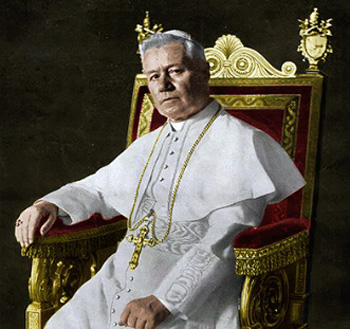 “Todo su sistema, con todos sus errores, ha nacido de la alianza entre la fe y la falsa filosofía”. (Pascendi § 41)
“Todo su sistema, con todos sus errores, ha nacido de la alianza entre la fe y la falsa filosofía”. (Pascendi § 41)
Como buen pastor de almas, San Pío X ofrecía consejos para evitar callejones sin salida en la filosofía y la teología, y para no quedar atrapados en el callejón sin salida del subjetivismo. Su relevancia hoy en día se ha agudizado: desde el Vaticano II, los teólogos han estado errando durante tanto tiempo que les resulta difícil encontrar el camino de regreso al catolicismo puro y simple.
Muchos de los que se han visto privados del beneficio del método escolástico carecen de los medios probados para distinguir adecuadamente entre lo verdadero y lo falso en la religión. Como resultado, se han vuelto cada vez más víctimas del ecumenismo y el pluralismo religioso promovidos por el Vaticano II y los papas conciliares. Peor aún, algunos ni siquiera son conscientes de la confusión general que existe hoy en día en materia de fe, y son incapaces de discernir, y mucho menos refutar, los razonamientos erróneos y los argumentos sofistas de la «Nueva Evangelización».”
La escolástica sustituida por las emociones internas
Nuestras incursiones en el pensamiento del Padre George Tyrrell y del Movimiento Modernista de principios del siglo XX, han sido útiles para desentrañar las raíces de las ideas revolucionarias del Vaticano II, impuestas a la Iglesia actual. Para Tyrrell, la Revelación surge de sentimientos internos; es «una experiencia directa dada al alma por Dios» que «no puede ser causada por instrucción externa»”1. Él no creía que la fe exigiera la conformidad del intelecto con la verdad revelada:
 “Es principalmente un camino o estilo de vida que se le ha confiado, más que un cuerpo de doctrina. La fe que ella conserva como depósito no es un sistema intelectual o teológico, ofrecido para su aprobación mental… Si es una verdad, no es una verdad del intelecto, sino una verdad o veracidad de la voluntad hacia Dios”.2
“Es principalmente un camino o estilo de vida que se le ha confiado, más que un cuerpo de doctrina. La fe que ella conserva como depósito no es un sistema intelectual o teológico, ofrecido para su aprobación mental… Si es una verdad, no es una verdad del intelecto, sino una verdad o veracidad de la voluntad hacia Dios”.2
Esta fue su razón para rechazar la autoridad docente de la Ecclesia Docens así como la Tradición como Depósito de la Fe, transmitida intacta de generación en generación. Según este modelo, las personas deben buscar en el «Dios interior» la fuente de la verdad.
En resumen, no creía que la Revelación se pudiera comunicar mediante proposiciones y fórmulas dogmáticas, de ahí su decisión de prescindir de la escolástica. Criticó «la insuficiencia de la filosofía escolástica como vehículo del pensamiento cristiano».3 Primero porque le parecía “un método tan extraño a los instintos intelectuales modernos”,4 y en segundo lugar, porque consideraba que era una ciencia muerta, divorciada de las exigencias de las situaciones reales que enfrentan las personas en el mundo moderno.
Explicó: “Las doctrinas fueron llevadas al criterio de la razón silogística, de la autoridad escrita, pero no al criterio de la vida vivida por los fieles”.5
Un principio fundamental de los modernistas originales y sus herederos actuales, los progresistas, es que la experiencia humana y las intuiciones internas de la mente son los únicos criterios válidos de verdad. Por ello, se hace tanto hincapié en la idea de una «Teología Viva» adaptada a las exigencias de nuestros días. El objetivo era sustituir la autoridad de la Revelación «externa», expresada mediante principios dogmáticos, vinculantes para cada individuo, por la evaluación subjetiva del individuo, cuyo juicio privado prevalece. Es comúnmente aceptado entre los católicos actuales que la fuente de la Verdad no se encuentra «ahí fuera», en lo que Dios ha revelado, sino «aquí dentro», en la mente de cada creyente.
El Magisterio infalible de la Ecclesia Docens, ligada como está a la Revelación Divina, ha llegado a ser considerada no sólo una irrelevancia en la vida de la Iglesia, sino un obstáculo para la unidad cristiana y un obstáculo para la libertad y el progreso en la sociedad moderna.
Francisco siguió a Tyrrell en la destrucción de la escolástica.
Mientras que los teólogos neomodernistas del Vaticano II fueron demasiado astutos para presentar su versión del Apocalipsis en términos tomados abiertamente del Padre Tyrrell, prefiriendo disimular las similitudes entre ellos con ofuscaciones verbales, Francisco abandonó toda precaución y habló como un verdadero hijo de su mentor jesuita. A diferencia de los progresistas del Vaticano II, pudo permitirse adoptar una postura más abierta ahora que la victoria del modernismo en la Iglesia ha quedado firmemente establecida.
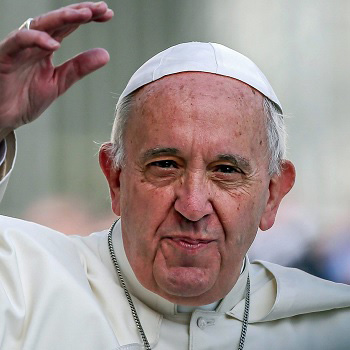 Un ejemplo notorio en el que Francisco aplicó lo que Tyrrell llamó “el criterio de la vida vivida por los fieles” fue cuando, en Amoris laetitia (2016), recomendó que los divorciados vueltos a casar sin compromiso de continencia pudieran recibir la Sagrada Comunión, al menos en algunos casos. Esto demuestra claramente su oposición a la legislación de la Iglesia —derivada de la Ley Divina—, que impone a los sacerdotes la obligación de excluir a estas personas de la Sagrada Comunión, sin excepciones. Al hacerlo, contradijo la enseñanza y la disciplina de todos sus Predecesores
Un ejemplo notorio en el que Francisco aplicó lo que Tyrrell llamó “el criterio de la vida vivida por los fieles” fue cuando, en Amoris laetitia (2016), recomendó que los divorciados vueltos a casar sin compromiso de continencia pudieran recibir la Sagrada Comunión, al menos en algunos casos. Esto demuestra claramente su oposición a la legislación de la Iglesia —derivada de la Ley Divina—, que impone a los sacerdotes la obligación de excluir a estas personas de la Sagrada Comunión, sin excepciones. Al hacerlo, contradijo la enseñanza y la disciplina de todos sus Predecesores
La evidencia también es incontrovertible de que, en este caso, Francisco ha introducido un importante cambio revolucionario en la inmutable la enseñanza moral de la Iglesia sobre una práctica que Nuestro Señor calificó de adulterio (Lc 16,18). Ninguna "medicina de la misericordia" puede sanear la acción del Papa, considerándola como algo más que un ataque directo contra la Escritura y la Tradición, los dos pilares indispensables sobre los que se asienta la legitimidad del papado.
Fue un triunfo —poco loable— para los neomodernistas, que no habría podido lograrse sin la destrucción del bastión de la gran tradición escolástica. Pero no olvidemos que fue Tyrrell quien, en primer lugar, contribuyó a destruir el método teológico y filosófico de razonamiento intelectual que había sustentado siglos de enseñanza magisterial y que había permitido a los teólogos alcanzar una comprensión adecuada de la verdad católica.
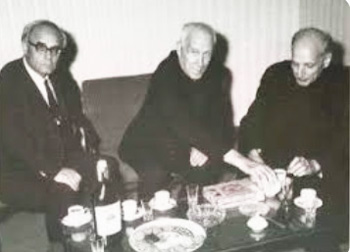 La evidencia histórica muestra que la escolástica, herida de muerte por Tyrrell y sus asociados, fue completamente exterminada por sus herederos: los jesuitas de Lubac, von Balthasar y Rahner, los dominicos Chenu, Congar y Schillebeeckx, y Ratzinger, por nombrar a los más egregios promotores de la «Nueva Teología». Y a esta lista debemos, por supuesto, añadir el nombre del papa Francisco, quien propinó su propio y despiadado coup de grâce.
La evidencia histórica muestra que la escolástica, herida de muerte por Tyrrell y sus asociados, fue completamente exterminada por sus herederos: los jesuitas de Lubac, von Balthasar y Rahner, los dominicos Chenu, Congar y Schillebeeckx, y Ratzinger, por nombrar a los más egregios promotores de la «Nueva Teología». Y a esta lista debemos, por supuesto, añadir el nombre del papa Francisco, quien propinó su propio y despiadado coup de grâce.
Contamos con el testimonio triunfalista del P. Congar, quien afirma que el Vaticano II rompió la hegemonía del sistema escolástico sobre los métodos de catequesis de la Iglesia. Al afirmar:
El Concilio destruyó lo que yo llamaría la incondicionalidad del sistema. Lo que entiendo por «sistema» es un cuerpo completo y muy coherente de ideas transmitidas por las enseñanzas de las universidades romanas, codificadas por el Derecho Canónico, protegidas por la estricta y eficiente vigilancia de Pío XII, con informes, amonestaciones, la presentación de escritos a la censura romana, etc.; en resumen, todo un «sistema». Con el Concilio, esto se desintegró. Se soltaron las lenguas. Los elementos ocultos afloraron.6
No debemos perder de vista la consecuencia lógica de reemplazar la escolástica con filosofías seculares modernas en el ámbito de la moral católica. La Jerarquía ya no cuenta con los recursos para combatir eficazmente la oleada de depravación moral que ha inundado la Iglesia desde el Vaticano II, ya sea en el ámbito del abuso infantil por parte del clero, la ética marital o cualquier otro aspecto de la moral sexual. Al transigir con el espíritu del mundo en el tema del adulterio, Francisco ha dado la impresión de que no se considera sujeto ni a la Ley Divina ni a la Ley Natural, y que la Iglesia no se toma en serio las infracciones del Sexto Mandamiento.
Continuará

La capacidad de hacer estas distinciones formaba parte de un sistema más amplio de formación intelectual para los jóvenes clérigos que se preparaban para ser sacerdotes, permitiéndoles distinguir entre las realidades objetivas de la fe católica y las meras opiniones subjetivas; en otras palabras, entre las filosofías de la religión verdaderas y las falsas. Lo que el Papa Pío X dijo de los modernistas de su época es igualmente cierto para sus herederos, los progresistas:

El Papa San Pío X escribió la Encíclica Pascendi contra el modernismo
Como buen pastor de almas, San Pío X ofrecía consejos para evitar callejones sin salida en la filosofía y la teología, y para no quedar atrapados en el callejón sin salida del subjetivismo. Su relevancia hoy en día se ha agudizado: desde el Vaticano II, los teólogos han estado errando durante tanto tiempo que les resulta difícil encontrar el camino de regreso al catolicismo puro y simple.
Muchos de los que se han visto privados del beneficio del método escolástico carecen de los medios probados para distinguir adecuadamente entre lo verdadero y lo falso en la religión. Como resultado, se han vuelto cada vez más víctimas del ecumenismo y el pluralismo religioso promovidos por el Vaticano II y los papas conciliares. Peor aún, algunos ni siquiera son conscientes de la confusión general que existe hoy en día en materia de fe, y son incapaces de discernir, y mucho menos refutar, los razonamientos erróneos y los argumentos sofistas de la «Nueva Evangelización».”
La escolástica sustituida por las emociones internas
Nuestras incursiones en el pensamiento del Padre George Tyrrell y del Movimiento Modernista de principios del siglo XX, han sido útiles para desentrañar las raíces de las ideas revolucionarias del Vaticano II, impuestas a la Iglesia actual. Para Tyrrell, la Revelación surge de sentimientos internos; es «una experiencia directa dada al alma por Dios» que «no puede ser causada por instrucción externa»”1. Él no creía que la fe exigiera la conformidad del intelecto con la verdad revelada:

Padre Tyrrel: La revelación surge de los sentimientos internos
Esta fue su razón para rechazar la autoridad docente de la Ecclesia Docens así como la Tradición como Depósito de la Fe, transmitida intacta de generación en generación. Según este modelo, las personas deben buscar en el «Dios interior» la fuente de la verdad.
En resumen, no creía que la Revelación se pudiera comunicar mediante proposiciones y fórmulas dogmáticas, de ahí su decisión de prescindir de la escolástica. Criticó «la insuficiencia de la filosofía escolástica como vehículo del pensamiento cristiano».3 Primero porque le parecía “un método tan extraño a los instintos intelectuales modernos”,4 y en segundo lugar, porque consideraba que era una ciencia muerta, divorciada de las exigencias de las situaciones reales que enfrentan las personas en el mundo moderno.
Explicó: “Las doctrinas fueron llevadas al criterio de la razón silogística, de la autoridad escrita, pero no al criterio de la vida vivida por los fieles”.5
Un principio fundamental de los modernistas originales y sus herederos actuales, los progresistas, es que la experiencia humana y las intuiciones internas de la mente son los únicos criterios válidos de verdad. Por ello, se hace tanto hincapié en la idea de una «Teología Viva» adaptada a las exigencias de nuestros días. El objetivo era sustituir la autoridad de la Revelación «externa», expresada mediante principios dogmáticos, vinculantes para cada individuo, por la evaluación subjetiva del individuo, cuyo juicio privado prevalece. Es comúnmente aceptado entre los católicos actuales que la fuente de la Verdad no se encuentra «ahí fuera», en lo que Dios ha revelado, sino «aquí dentro», en la mente de cada creyente.
El Magisterio infalible de la Ecclesia Docens, ligada como está a la Revelación Divina, ha llegado a ser considerada no sólo una irrelevancia en la vida de la Iglesia, sino un obstáculo para la unidad cristiana y un obstáculo para la libertad y el progreso en la sociedad moderna.
Francisco siguió a Tyrrell en la destrucción de la escolástica.
Mientras que los teólogos neomodernistas del Vaticano II fueron demasiado astutos para presentar su versión del Apocalipsis en términos tomados abiertamente del Padre Tyrrell, prefiriendo disimular las similitudes entre ellos con ofuscaciones verbales, Francisco abandonó toda precaución y habló como un verdadero hijo de su mentor jesuita. A diferencia de los progresistas del Vaticano II, pudo permitirse adoptar una postura más abierta ahora que la victoria del modernismo en la Iglesia ha quedado firmemente establecida.

Francisco permitió la comunión a parejas moralmente irregulares
La evidencia también es incontrovertible de que, en este caso, Francisco ha introducido un importante cambio revolucionario en la inmutable la enseñanza moral de la Iglesia sobre una práctica que Nuestro Señor calificó de adulterio (Lc 16,18). Ninguna "medicina de la misericordia" puede sanear la acción del Papa, considerándola como algo más que un ataque directo contra la Escritura y la Tradición, los dos pilares indispensables sobre los que se asienta la legitimidad del papado.
Fue un triunfo —poco loable— para los neomodernistas, que no habría podido lograrse sin la destrucción del bastión de la gran tradición escolástica. Pero no olvidemos que fue Tyrrell quien, en primer lugar, contribuyó a destruir el método teológico y filosófico de razonamiento intelectual que había sustentado siglos de enseñanza magisterial y que había permitido a los teólogos alcanzar una comprensión adecuada de la verdad católica.

Desde la izquierda, Los jesuitas Karl Rahner y Henri de Lubac con su superior Pedro Arrupe
Contamos con el testimonio triunfalista del P. Congar, quien afirma que el Vaticano II rompió la hegemonía del sistema escolástico sobre los métodos de catequesis de la Iglesia. Al afirmar:
El Concilio destruyó lo que yo llamaría la incondicionalidad del sistema. Lo que entiendo por «sistema» es un cuerpo completo y muy coherente de ideas transmitidas por las enseñanzas de las universidades romanas, codificadas por el Derecho Canónico, protegidas por la estricta y eficiente vigilancia de Pío XII, con informes, amonestaciones, la presentación de escritos a la censura romana, etc.; en resumen, todo un «sistema». Con el Concilio, esto se desintegró. Se soltaron las lenguas. Los elementos ocultos afloraron.6
No debemos perder de vista la consecuencia lógica de reemplazar la escolástica con filosofías seculares modernas en el ámbito de la moral católica. La Jerarquía ya no cuenta con los recursos para combatir eficazmente la oleada de depravación moral que ha inundado la Iglesia desde el Vaticano II, ya sea en el ámbito del abuso infantil por parte del clero, la ética marital o cualquier otro aspecto de la moral sexual. Al transigir con el espíritu del mundo en el tema del adulterio, Francisco ha dado la impresión de que no se considera sujeto ni a la Ley Divina ni a la Ley Natural, y que la Iglesia no se toma en serio las infracciones del Sexto Mandamiento.
Continuará
- George Tyrrell, Through Scylla and Charybdis or, The Old Theology and the New, London: Longmans, Green, 1907, p. 316.
- G. Tyrrell, The Church and the Future, London: Priory Press, 1910, p. 72.
- G. Tyrrell, Medievalism, a Reply to Cardinal Mercier, London: Longmans, Green, and Co., 1908, p. 108.
- G. Tyrrell, The Church and the Future, p. 32.
- Ibid., p. 102.
- Jean Puyo, Jean Puyo interroge le Père Congar: Une Vie Pour la Vérité, Paris: Éditions du Centurion, 1975, p. 220.
Publicado el 12 de mayo de 2025

______________________
______________________
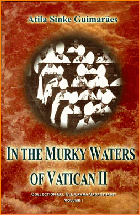 Volume I |
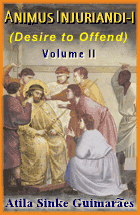 Volume II |
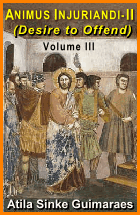 Volume III |
 Volume IV |
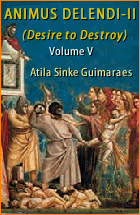 Volume V |
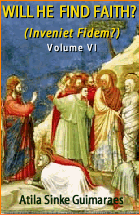 Volume VI |
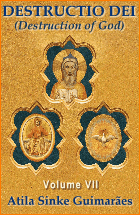 Volume VII |
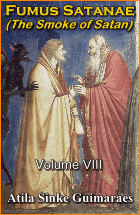 Volume VIII |
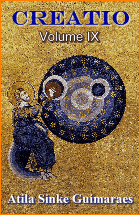 Volume IX |
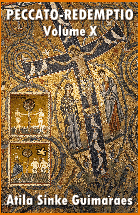 Volume X |
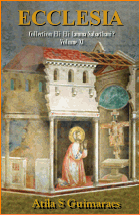 Volume XI |
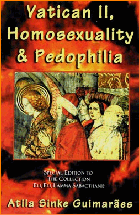 Special Edition |






